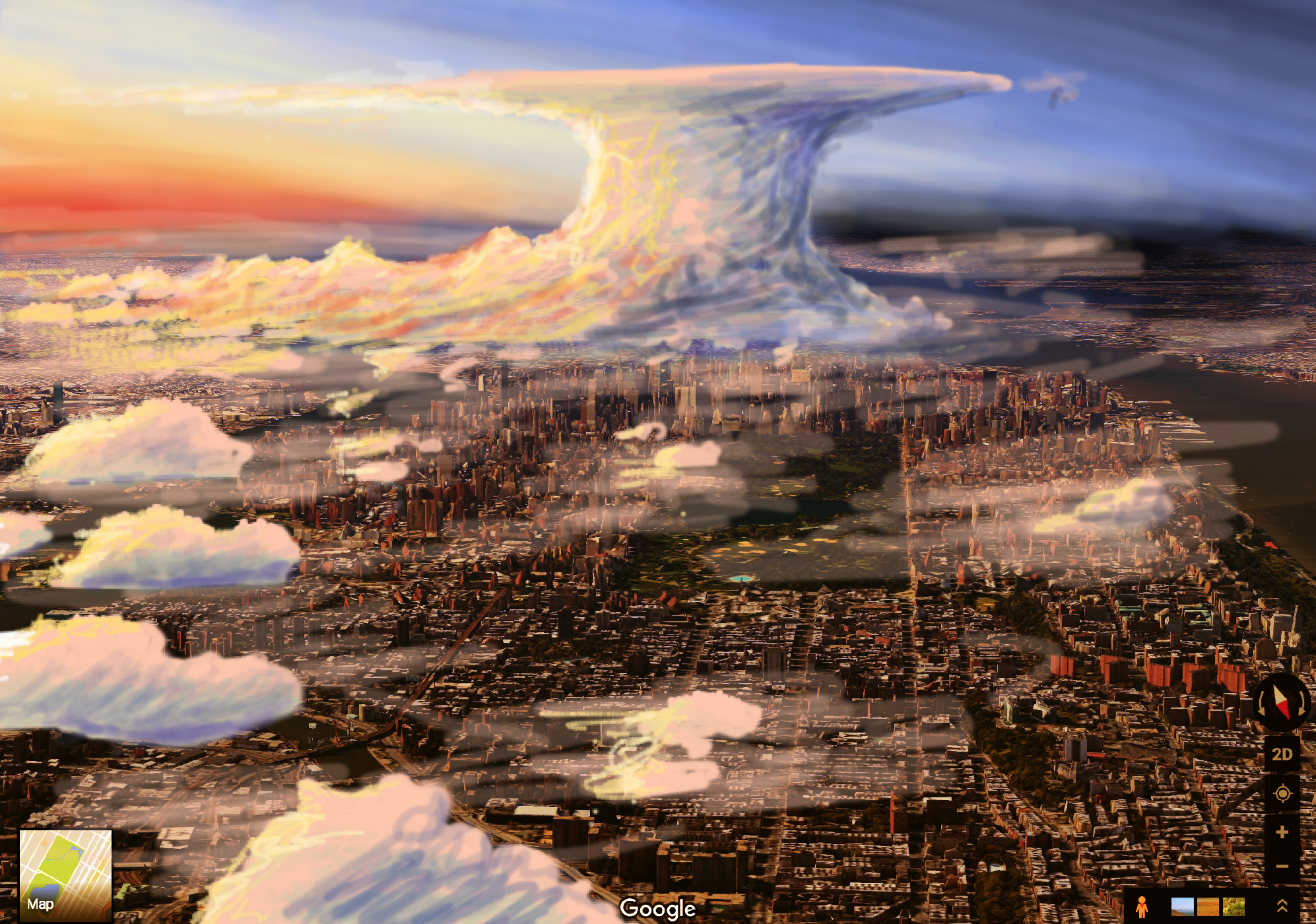When you search for a building, you see pictures and a map. However, If you were in a sci-fi movie, you’d probably see an interactive 3D model of the building. Google could bring us into the future.
This is a proposal for Google Maps to use their 3D imagery to build a collection of isolated buildings for use elsewhere on the web.
These isolated buildings could be used in Google search previews, embedded in Wikipedia pages, and downloaded for 3D modeling projects.
A diagram showing the isolated building (blue) being transcluded into other places on the web.
Here’s this same diagram with actual screenshots of the 3D view of One World Trade Center on Google Maps, with arrows pointing to where an isolated 3D model could be embedded.
The top section illustrations that this isolation could be pretty easily executed by extruding the footprint of every building up to the height of the building. This works for most buildings, since the footprint of buildings are typically larger than the top sections. For more complex buildings, however, these models could be manually isolated.
If you know anybody who works on the Google Maps team, please send this to them!
Feedback and other ideas are welcome in the comment section below!




